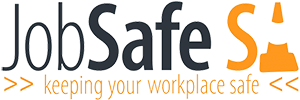Automotive
Automotive manufacturing includes building parts, accessories and components for motor vehicles (including motor vehicle bodies). Products manufactured by this industry include mechanical and electronic components, as well as parts for electric motors.
Body stressing or muscular skeletal stress due to heavy lifting, repetitive actions and sustained awkward postures are a major social and economic burden on the manufacturing industry. It accounted for 11.3% of all of the manufacturing industry’s workers compensation claims for 2021/2022. According to Workers Compensation figures, there were more than 112,00 musculoskeletal injury claims during the financial year 2021 2022.
INJURIES
The main causes of injuries in the automotive manufacturing industry are:
- manual handling – through lifting/carrying heavy and/or awkward objects.
- slips and trips – on uneven floors or due to poor housekeeping; failure to promptly clear up oil/water spillages.
- struck by falling objects, moving vehicles.
- falls from height – from vehicles or raised storage areas –
ladders or into inspection pits. - mechanical machinery accidents from unguarded or improperly machines.
HAZARDS
Machinery / Plant
A wide range of mechanical equipment is used within the manufacturing industry and examples include power presses, cutting tools, planers, and routers. Approximately 8 out of 10 workplace fatalities and 1 in 4 workplace injuries involve machinery.
Mechanical equipment can cause:
- sprains and strains
- open wounds
- fractures
- amputations
- death
These injuries occur through:
- contact or entanglement with machinery
- being trapped between the machine and material or fixed structure
- contact with material in motion
- being struck by material ejected from the machine and
- release of potential energy
The Occupational Health and Safety (Plant) Regulations 1995 are designed to protect people at work against the risks to health or safety arising from plant and systems of work associated with plant.
The Regulations apply not only to employers who use plant but also to designers, manufacturer’s, importers and suppliers of plant. The Regulations require that guarding is fitted, as a measure to control risk, to any machinery, equipment, appliance, implement or tool to prevent access to the danger point or area of the plant.
Poor machine guarding practices are one of the greatest contributors to workplace injuries
in South Australia. Inadequate machine guarding can result in tragic consequences – loss of fingers, hands or worse. Machine guarding is vital to every workplace that uses machinery and guards need not be complicated nor interfere with productivity.
- All guards should be correctly fitted before operating a machine.
- Make sure the machine operates correctly and that the protective guarding can not be removed while the machine is operating.
- If you can not change the process to eliminate the risk, then other options need to be considered for example having fixed or interlocking guards to prevent contact with the danger area.
Preventative measures
As mentioned previously approximately 8 out of 10 workplace fatalities and 1 in 4 workplace injuries involve machinery. Employers have an obligation to keep their employees safe from injury and risks to their health while at work.
Examples of preventative measure that can be put into place for machinery:
- install dual interlock safety systems as a minimum control measure to ensure that machinery moving parts are stopped when access is required to trapping spaces.
- inspect and test the safety system daily, including interlock guards, clutch locks and clutch breaks mechanisms.
- service the plant regularly to prevent faulty operation and rectify any faults promptly.
- trained operators and qualified setters or technicians should check and test-run the plant several times prior to production operations.
- develop procedures with employees and any relevant health and safety representatives for the safe operation of plant. Procedures should be regularly reviewed; e.g. as part of weekly health and safety meetings.
- provide all relevant employees with information, training and instructions on safe working procedures, including isolating procedures. Develop ways of encouraging safe work practices; e.g. operator to demonstrate procedures to other employees.
- put appropriate signage on or near the machinery to alert employees of the dangers of operating this plant.
Other hazards in the manufacturing industry include:
Noise
Plant / Machinery
Slips and Trips
Forklifts
Hazardous Substances
Fatigue
Hazardous Manual Tasks
Electrical Safety
Note:
Many companies have been found in breach of their OHS obligations to employees. Take an informative look at the successful convictions by SafeWork SA
Acknowledgements:
Workcover ACT – www.workcover.act.gov.au
SafeWork SA – www.safework.sa.gov.au
WorkSafe Victoria – www.worksafe.vic.gov.au
